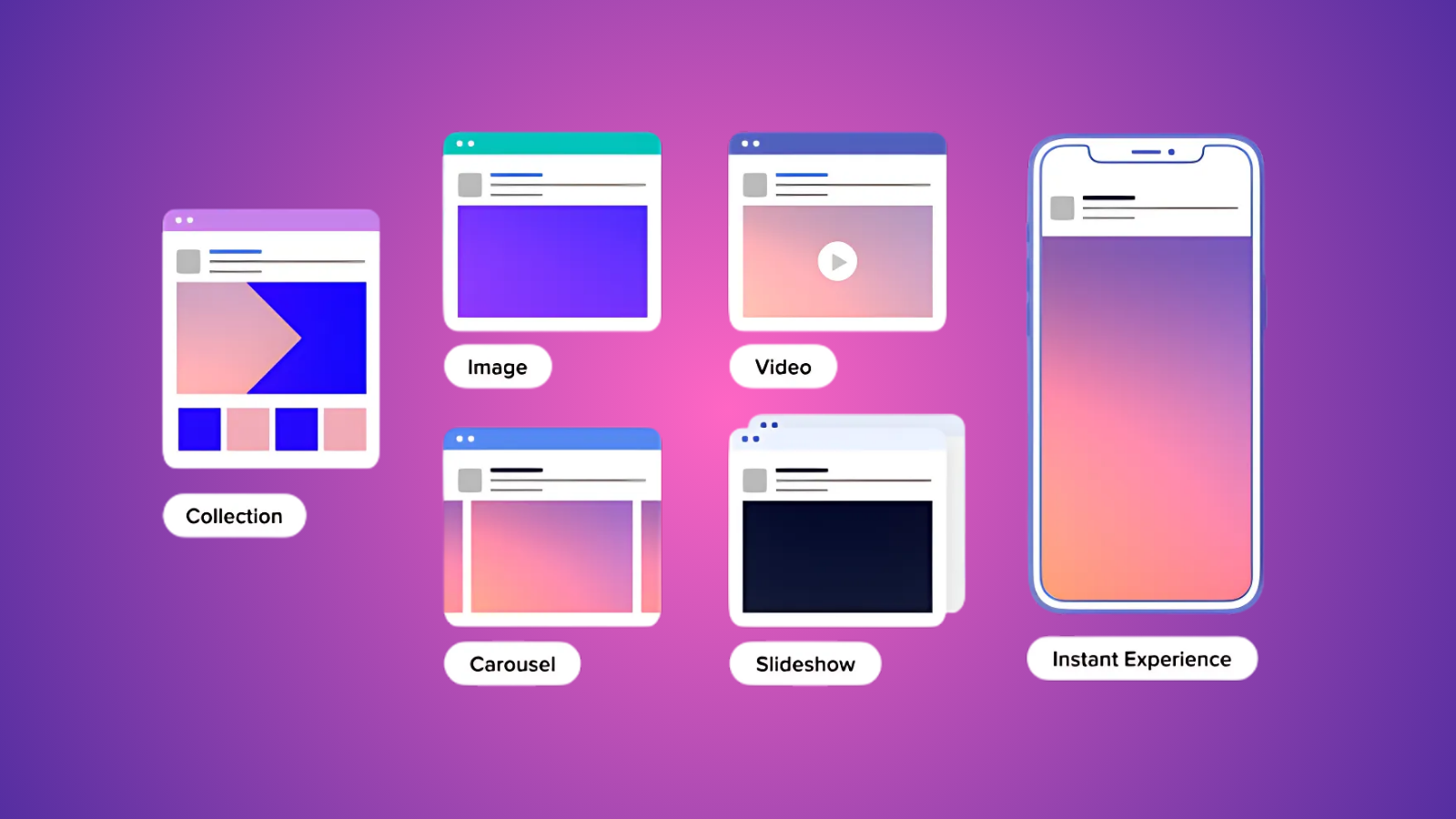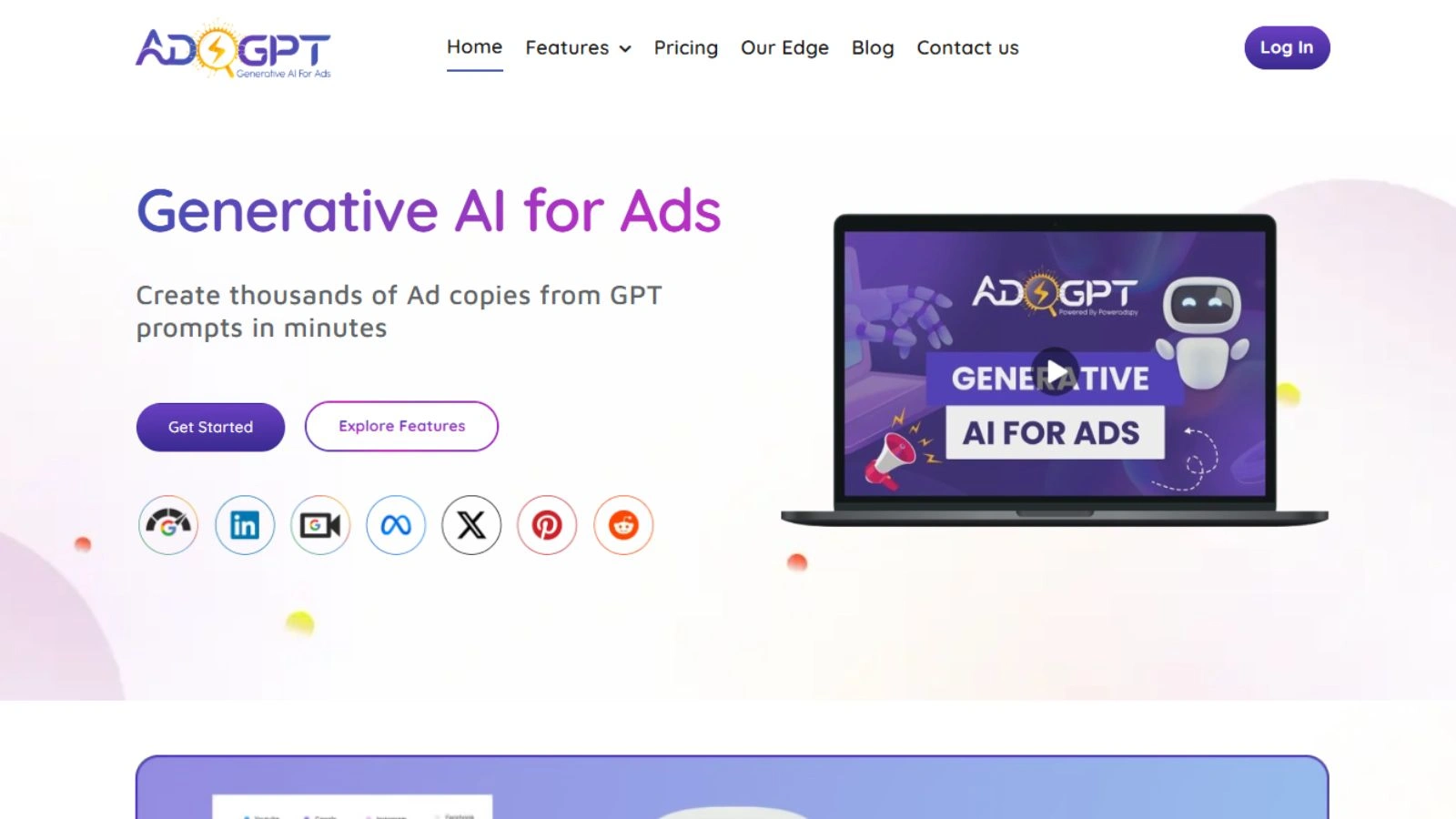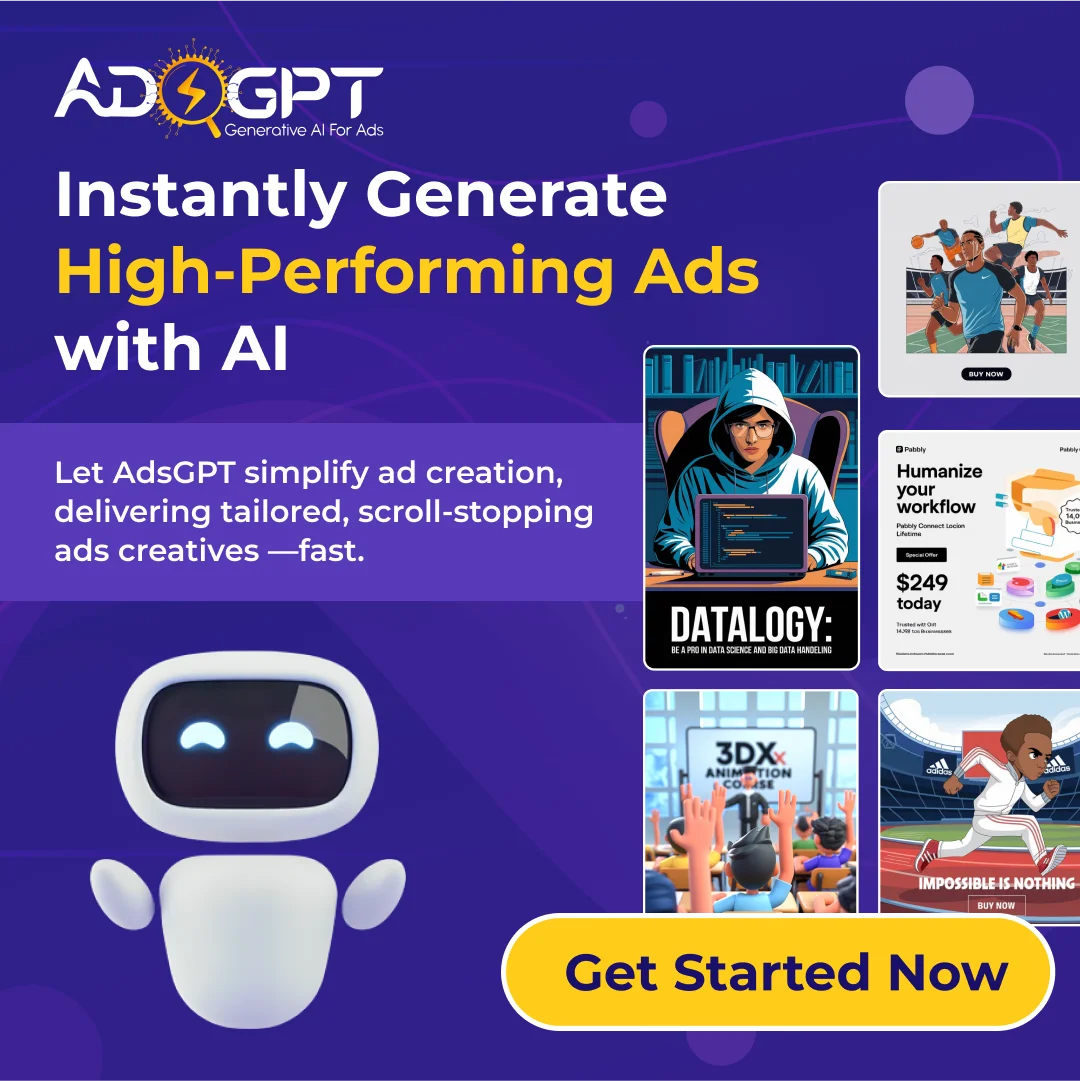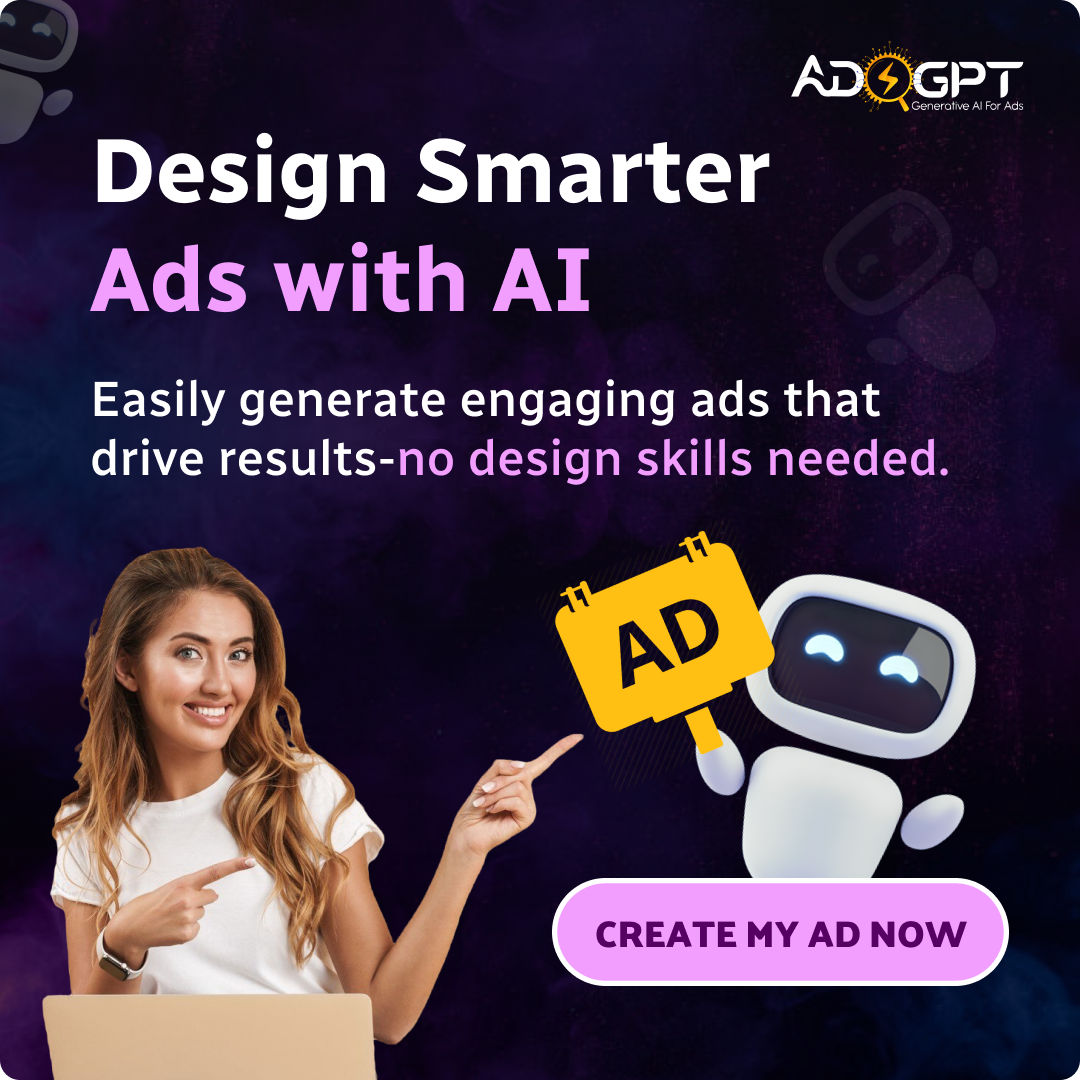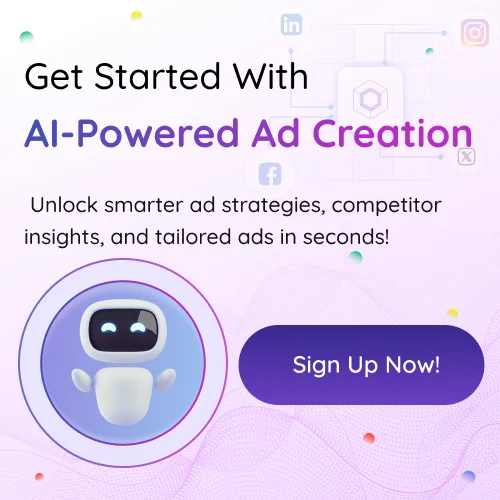
To Create an advertisement that stands out in a crowded market isn’t just about eye-catching visuals or catchy phrases. It’s about strategy, precision, and a deep understanding of your audience. From the initial concept to the final call-to-action, every detail plays a role in determining whether your ad will succeed or fade into the background.
If you’re looking to craft ads that not only grab attention but also drive tangible results, or want to create ads with AI for greater efficiency, you’ve come to the right place. In this blog, we’re diving deep into the 8 essential steps that will transform your advertising game.
Whether you’re looking to boost brand awareness, increase conversions, or simply make a lasting impression, these steps will guide you through the process with clarity and purpose. Ready to create an advertisement that truly make an impact? Let’s get started!
But First… Why Do So Many Ads Miss the Mark?
You’ve likely seen ads that look flashy but leave you wondering what they were even about. Or maybe you’ve come across ones that felt like they were speaking to someone else entirely. That’s because truly effective advertising isn’t built on guesswork—it’s built on intention.
Before diving into the eight actionable steps, it’s important to recognize what sets high-performing ads apart: they’re relevant, emotionally resonant, and strategically aligned with business goals.
So, if your goal is to create an advertisement that not only looks good but actually delivers results, it’s time to dig into a process that’s as purposeful as it is powerful.
8 Essential Steps to Create an Advertisement That Works
To get started, let’s break down the eight essential steps you need to follow to create an advertisement that actually delivers results.
Step 1: Define Your Target Audience
Understand Who You’re Talking To
Before diving into the design and copy, take a moment to understand who your advertisement is for. Pinpointing your target audience is crucial because it ensures that your ad resonates with the right people. By knowing your ideal customer, you can tailor your message to their needs, desires, and pain points.
- Tip: Start by creating a customer persona. This is a detailed profile of your ideal customer, including their age, location, interests, and purchasing habits.
- Actionable Tip: If your product is versatile, create multiple personas to better target different segments of your audience.
Example: If you are targeting tech-savvy professionals, make sure your ad speaks to their desire for innovation and cutting-edge features.
Step 2: Conduct Market Research
Dive Deep into Customer Preferences
Once you’ve defined your audience, dive deeper into their preferences, behaviors, and habits. This is where conducting market research becomes essential. Learn about your audience’s purchasing behaviors, the platforms they frequent, and the types of ads they engage with.
- Tip: Use social listening tools or online surveys to gather real-time insights into your audience’s interests.
- Insider Tip: Pay attention to your competitors. Study the types of ads they run and how your target audience responds to them. This can reveal opportunities to stand out.
Example: If you discover that your target audience engages more with video ads on Instagram than static image ads on Facebook, adjust your ad format accordingly. This data doesn’t just inform content—it also powers automation through strategies like programmatic marketing, which enables real-time ad placements based on user behavior.
Step 3: Choose Your Ad Format
Select the Best Format for Maximum Impact
When you create an advertisement, selecting the right format is key to ensuring it resonates with your audience and meets your goals.” Whether it’s display ads, video ads, or even social media campaigns, each format has its strengths. Consider using a combination of these to widen your reach, depending on the platform you’re targeting.
- Tip: Video ads tend to perform well on platforms like YouTube and Instagram, while display ads are more effective for remarketing on websites.
- Actionable Tip: Test different formats with small budgets to see which works best for your objectives.
Example: For a product launch, video ads on Instagram Stories might be ideal for showcasing product features in an engaging way.
Step 4: Decide on Your Ad’s Purpose
Clarify Your Ad’s Goal to Shape Your Approach
When you create an advertisement, defining its purpose is the foundation of a successful campaign. What do you want your ad to achieve? Are you aiming for brand awareness, increasing product awareness, or pushing for conversions? Knowing your objective will shape the entire approach of your campaign.
- Tip: Define your success metrics upfront. If you aim for conversions, focus on metrics like cost-per-click (CPC) and return on ad spend (ROAS).
- Insider Tip: Align your ad’s purpose with your sales funnel. If you’re early in the funnel, focus on brand awareness; if you’re closer to a purchase decision, focus on conversions.
Example: If you’re looking for sign-ups, make sure your ad has a strong call-to-action (CTA) urging viewers to register or sign up for more information.
Step 5: Select the Right Platform
Choose Where Your Audience Hangs Out
Choosing the right platform for your ad is crucial. Whether you opt for social media ads or search engine marketing, each platform has its own strengths. For example, Facebook and Instagram are ideal for reaching a broad audience, while LinkedIn may be better for targeting professionals.
- Tip: Understand where your target audience spends the most time and tailor your platform choice accordingly.
- Actionable Tip: Consider using multiple platforms to broaden your reach but ensure the creative assets are optimized for each one.
Example: If you’re targeting a B2B audience, LinkedIn might be a better choice, while Facebook is more suited for consumer products.
Step 6: Set a Budget
Control Your Spending for Better Results
Now it’s time to decide how much you’re willing to invest in your ad campaign. Setting a budget is essential to ensure that your resources are allocated wisely across the campaign’s lifecycle. For businesses just starting out, it’s smart to begin with a modest budget and optimize as you go.
- Tip: Start small to test the waters. Use data from your initial ad performance to scale up the budget for high-performing ads.
- Insider Tip: Make use of bid adjustments and optimize for the best cost per result (e.g., clicks or conversions).
Example: Begin with a daily budget of $10-$20 for a week to gather initial data, then increase your budget based on which ads perform the best.
Step 7: Craft the Perfect Message
Write Ads That Speak to Your Audience’s Needs
When you create an advertisement, the message you deliver is the heart of its success. The ad copy should be compelling and speak directly to your audience’s needs. Whether you’re making ads for a specific product or promoting a service, keep the message clear, concise, and aligned with your target audience’s values.
- Tip: Focus on benefits, not just features. Customers care more about how your product can solve their problems than its technical specifications.
- Actionable Tip: Use persuasive language that encourages action, like “Limited time offer!” or “Claim your discount now!”
If writing the perfect message feels daunting, an ai ad maker like AdsGPT can streamline the process to create an advertisement. With AI-driven tools, it helps generate ad copy that resonates with your target audience. By analyzing your customer persona and campaign objectives, AdsGPT crafts copy that’s not only persuasive but optimized for conversions. Whether you need short and snappy text for a banner ad or engaging copy for a social media post, AdsGPT can do it all.
Unleash the Power of AdsGPT for Next-Level Ads!
Creating high-impact ads shouldn’t be a guessing game. AdsGPT, a powerful Generative AI for Ads, brings AI-driven innovation to your ad strategy—helping you craft compelling, platform-optimized copies in seconds. Whether you’re targeting Google, Meta, LinkedIn, or Twitter, AdsGPT ensures your ads are not just seen—but acted upon.
1. Instant Ad Copy Generation
Generate high-quality ad copy tailored for platforms like Google, Meta, LinkedIn, and more—at lightning speed. Simply input your core idea, and let AdsGPT handle the rest.
2. AI-Powered Creativity
Let AI create an advertisement that’s high-performing based on your inputs, ensuring each copy is creative and engaging. AdsGPT delivers compelling ads that resonate with your audience.
3. Platform-Specific Optimization
Optimize your ad copy for different platforms effortlessly. AdsGPT ensures your ads are perfectly tailored to meet each platform’s unique requirements.
Step 4: Get Inspired by Competitor Ads
Analyze competitor ads and let AdsGPT help you craft AI generated ads that are inspired by the most effective strategies. By studying what your competitors are doing, you can quickly create fresh, relevant, and impactful ads tailored to your audience.
5. Call to Action Analysis
Analyze which CTAs are driving the most engagement across industries. AdsGPT helps you select the most effective CTA to boost your ad performance.
With AdsGPT, ad creation becomes faster, easier, and more efficient. Whether you’re a seasoned marketer or just starting out, AdsGPT will help you create ads that truly stand out. Ready to change the way you create an advertisement? Let AdsGPT elevate your advertising game.
Step 8: Design Engaging Creative Assets
Create Visuals That Capture Attention
Now that you have the message, the next step to create an advertisement that grabs attention is to bring it to life with stunning visuals. Whether you go for sleek graphics, dynamic videos, or animations, the approach you choose—ads design tool and traditional designing—can significantly impact your output in terms of time, efficiency, and creativity.
- Tip: Maintain a consistent visual style across all your ads to create brand recognition.
- Actionable Tip: Test different visuals, like lifestyle images or product-focused shots, to create an emotional connection with potential buyers.
- Insider Tip: If using animations or videos, ensure they are optimized for mobile viewing, as most users access ads through mobile devices.
Example: If you are promoting a fitness app, create short, impactful video clips that demonstrate the app’s features in action, showcasing real users working out.
Bonus Step: Track, Analyze, and Optimize
When you create an advertisement, the process doesn’t end once it’s launched—tracking and analyzing performance is crucial to success Tracking and analyzing performance is critical to ensuring your ad is hitting the mark. Utilize analytics tools to measure engagement rates, click-through rates (CTR), conversions, and other key performance indicators (KPIs).
Use this data to continuously improve your ads. Adjust targeting, refine your message, or experiment with different formats to maximize the impact of your campaign.
Final Thoughts: Elevate Your Advertising Game
To create an advertisement that captures attention and drives results, you need more than just creativity—you need strategy, precision, and the right tools By following these eight essential steps, you can craft ads that resonate with your audience, align with your business goals, and maximize your ROI.
But why stop there? With an online ad creator like AdsGPT, you can supercharge your ad creation process with AI-powered efficiency. From instant ad copy generation to competitor insights and CTA analysis, AdsGPT ensures your ads are optimized for success.
So, whether you’re launching your first campaign or refining your existing strategy, take these insights, apply them to your advertising efforts, and watch your brand stand out like never before!


